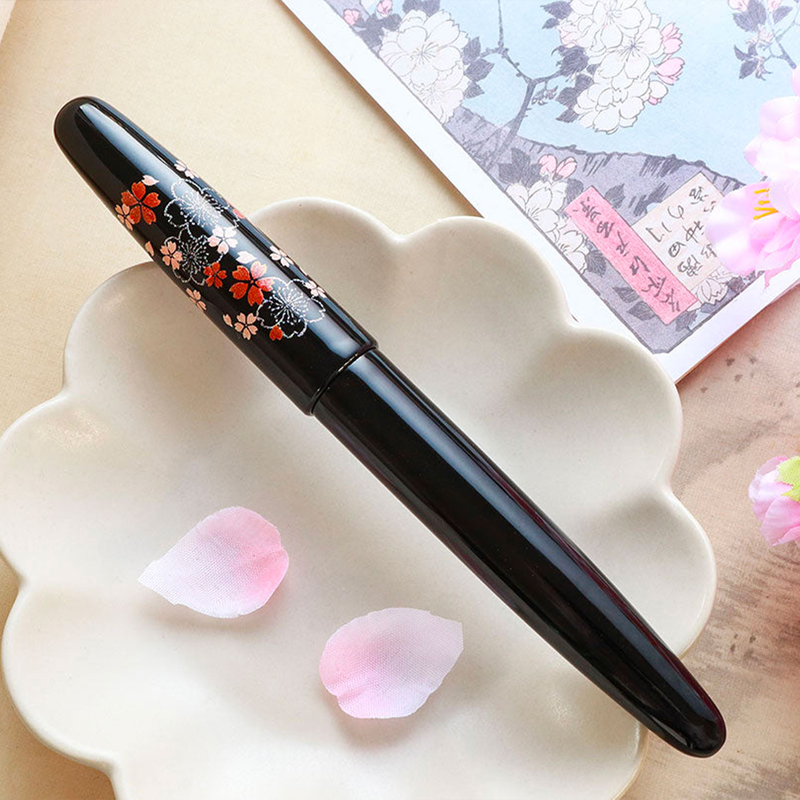













The Omoide Sakura was inspired by the desire to preserve the cherry blossom in its physical form, which Wancher hoped to represent through the subtle design.
| Brand | Wancher |
| Series | Wancher Dream Pen True Urushi |
| Color | Black |
| Edition | Regular |
| Body Material | Ebonite |
| Nib Material | Steel |
| Nib Type | Hard |
| Filling Mechanism | Standard Cartridge/Converter |
| Converter Included | Yes |
| Cap Type | Screw-Cap |
| Trim | Gold |
| Length (closed) | 154 mm |
| Length (body) | 136 mm |
| Length (cap) | 69 mm |
| Diameter (grip) | 15 mm |
| Weight (overall) | 30 g |
"Omoide" means memory or recollection in Japanese. Certain memories of cherry blossoms remain long after their last bloom. Now Wancher wants to remember that while the impermanence of cherry blossoms adds to their beauty, they also desire a physical reminder of their existence. The Omoide Sakura was inspired by the desire to preserve the cherry blossom in its physical form, which Wancher hoped to represent through the subtle design.
Echizen Urushi is made in the Echizen region of Fukui Prefecture, Japan. The lacquer used to make Echizen Urushi is produced from the sap of the urushi tree, which is native to Japan and has been used in lacquerware production for over 9000 years. Echizen Urushi is known for its high quality and durability, as well as its beautiful, lustrous finish. The lacquer is applied in thin layers and each layer must be allowed to dry completely before the next one is applied. This process can take several months to complete.
One of the unique features of Echizen Urushi is that it is made using traditional techniques that have been passed down through the generations. Many of the artisans who produce Echizen Urushi are members of families who have been making lacquerware for hundreds of years. In addition to its beauty and craftsmanship, Echizen Urushi is also known for its practicality and durability. The lacquer itself is resistant to water, heat, and most types of acids, making it unique and long-lasting.
The Echizen Urushi artisans apply lacquer onto the body of the fountain pen and decorate it using the Modern Maki-e Technique - derived from the historic Maki-e technique. While the secrets of the Modern Maki-e technique cannot be revealed as each one is modified by the specific artisan, it is clear that the basic technique by itself results in beautifully designed fountain pens.
From the same collection
Viewed products